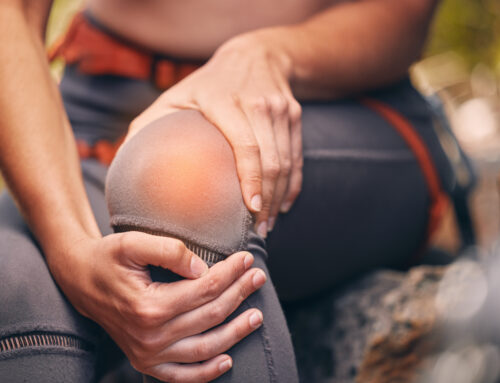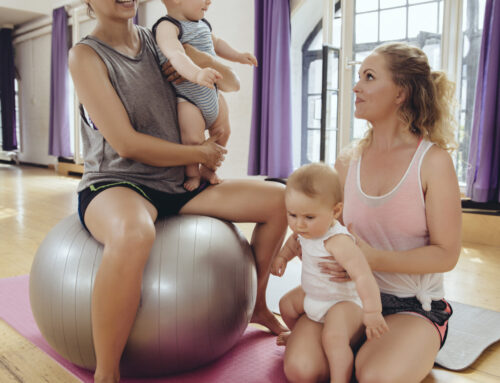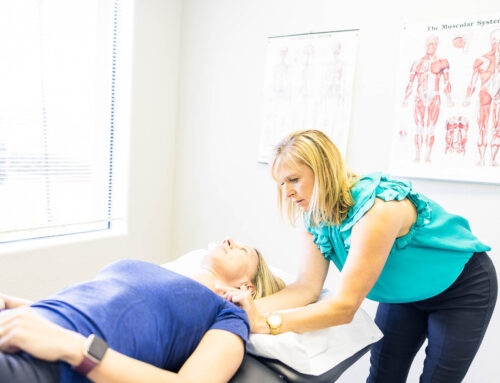“I’m scared to hurt myself or the baby.” This is a common sentiment I hear in my practice from pregnant women of all ages, stages of pregnancy, and fitness levels. It is a common misconception that it can be unsafe to work out during pregnancy and this couldn’t be further from the truth.
Exercise during pregnancy has many benefits including decreasing blood pressure, bloating and swelling, as well as easing constipation, decreasing low back and hip pain, and improving mood. So with all these benefits, why are women still afraid?
Common Fears Associated with Working Out During Pregnancy
Fear of Miscarriage
Miscarriage is one of the most commonly used reasons for fear of exercising while pregnant. A 2023 article in the Journal of Clinical Medicine did a Systematic Review and Meta Analysis of the research, which also included a look at 13 different clinical trials, that showed no increase in risk of miscarriage in those who were pregnant and exercised compared to those who did not. What does this mean? It means that exercise does not cause miscarriages!
Fear of Injury
Going through pregnancy causes many physical changes to a woman’s body, and can feel just plain weird. For example as a lifter, where you used to have a clear bar path, you now have a belly in the way. Cooking dinner can also make space feel odd – you were close to the counter, but no you now find yourself further away and having to lean. Not only does moving in exercise feel different, but also your typical day to day activities have to be adjusted. Women now feel like strangers in their own bodies and what they used to be able to do, they can’t do it the same, and do not know how to modify the activity. This can lead to a fear of overdoing it or straining and hurting themselves or the baby.
Fear of Pain
During pregnancy aches and pains can start to creep in with all the hormone changes that cause things like loosening of ligaments. Also a growing belly is making you adjust your posture and pulling on the low back and pelvis. Headaches and neck pain can also be common during pregnancy due to postural changes and increased blood flow. The idea of working out doesn’t sound like a good idea to most people because they are afraid it will make the pain worse.
Get Back to Working Out During Pregnancy
The good news is, there is so much that can be done to not only help with injury prevention while pregnant, but also give you relief if you are already in pain! Do not let anyone brush you off and say “Oh, it just hurts because you’re pregnant.” While the pain may have started during pregnancy, it does not mean that you can’t do something about it!
How to Prevent Injury Prevention When Working Out
If working out and lifting is something you have been doing prior to pregnancy it does not mean you have to stop once you do become pregnant. However, you may have to make some modifications as your pregnancy progresses to prevent unnecessary strain and injury.
Pregnancy is not the time to go for a personal record. A shift in mindset will be helpful here. Remember, this is just a season of life, this is not the rest of your life.
How to modify your workouts as your pregnancy progresses
 Lifting:
Lifting:
If you typically lift with a bar, once the belly starts to show (typically in the 2nd trimester) the bar path will become interrupted. This is when you should switch to lifting with dumbbells.
Squats and Deadlifts:
Posture is key with squats and deadlifts, pregnant or not. Being lazy with your posture is a sure way to increase your risk for injury. And when you are pregnant, you have additional weight in the front of your body, further challenging your balance and weight distribution. When you do squats and deadlifts while pregnant, push your booty out behind you and keep your chest over your toes. Inhale first, then exhale with the movement – so when you are squatting, inhale while standing, and exhale as you squat and stand back up.
Planks and Push-ups:
Planks and pushups are a great way to increase core and upper body strength, but it can be very hard to do them from the floor as your pregnancy progresses. Modify your planks and push ups by changing the incline. Bring planks up from the floor by using a workout bench, chair, counter top, or wall. Play with it until you find the angle that gives you a burn but does not overextend you, and is easy to get in and out of.
Tools and Workouts To Help with Pain in Pregnancy
If you are in pain, you DO NOT NEED TO LIVE WITH IT! Please advocate for yourself and get the help you need. I highly recommend seeing a pelvic floor physical therapist or a physical therapist who specializes in pregnancy and postpartum exercise. A few things you can try in the meantime:
- Ice it: Put ice on the affected area to help with inflammation and bring the pain down
- Bridges: inhale through the nose; exhale through mouth long and slow; lift up into a bridge; slowly lower back down and repeat. This can really help release the lower back.
- Clam Shells: lay on one side with your knees bent; inhale through nose; exhale long and slow; kegel; lift top knee, keeping feet together; bring knees back together; repeat. Do both sides.
- Hamstring Curl on Chair: lay on your back, calves and heels on chair or couch; inhale; exhale and pull heels towards you allowing buttocks to lift from floor.
- Supportive Belt: SI joint belts are very popular, but finding the right one can be difficult. The Serola Sacroiliac Belt is the one I recommend to my patients and is considered the gold standard!


 By:
By: 


